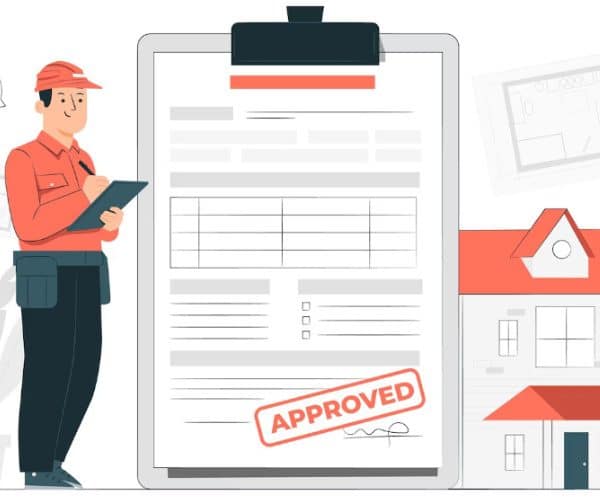Key accounts, also known as key customers, are the customers that generate the most revenue for a business and are there for a long period. These accounts are of high value for business for this very reason, and they have an impact on a business’s image in the market as well.
Businesses tend to prioritize these accounts by providing them with a wide range of services. For this, these accounts first have to be identified.
How to Identify Key Accounts?

The following are some major criteria that can help businesses identify key accounts:
Market Size
The first criterion to identify a key account would be its market size. This can be clear with the number or types of customers to which this account has access.
The products that this account purchases from the business will be used by its customers. The more customers an account has, the more value it holds for the business.
An account can also become more valuable if it sells to an elite group of customers that can generate more revenue even with fewer sales.
Average Transaction Size
The amount of money an account spends with a business also determines its key account status. The more an account purchases from a business, the more its value increases.
It also includes the revenue generation potential. This means the amount of money that an account may generate for the business in the future. This is an investment in the future and can prove to be beneficial.
Purchase Process
The purchase process of an account also plays a role in deciding its key account status. For example, an account may have only one decision-maker to process payments/purchases. This means that the process here is easier and quicker than the accounts that require multiple people/groups to make decisions.
Some businesses may also prefer cash payments and others may prefer e-payments. Whatever the priority is, an account agreeing with it may become a key account.
Geographic Alignment
This criterion is especially true for small businesses. Such businesses prefer having accounts that operate in close geographical proximity. This reduces shipping expenses and makes it easier to solve issues like late payments, returns, and exchanges.
Bigger businesses may not consider this a criterion because they can work with even foreign clients with ease.
Challenges of having Key Accounts
These are some of the main challenges of having key accounts:
Costly
The first challenge is that managing key accounts can be costly for businesses. Not all businesses can afford to hire a dedicated team for each key account.
Even though these accounts generate more revenue, it leave less to invest elsewhere because most of it goes to managing the team. Key accounts may also have specialized requirements, and fulfilling them may require more investment.
Vulnerability
Key accounts also increase a business’s vulnerability. This is because despite key accounts generating high revenue if they decide to switch businesses, the financial loss to the business can be huge.
Even if there are agreements in place and accounts can’t leave suddenly, finding another account as big as the one leaving can become a huge challenge.
Limits Business Growth
Having key accounts also increases the dependency of businesses on these customers. For the healthy growth of a business, it is crucial to explore the market.
This is what brings more customers to the business. However, the dependency on key accounts means that a major portion of energy is spent on these accounts and businesses seldom explore more avenues in the industry.
Highly Technical Job
Key account management is a highly technical job. The employees managing these accounts need to know multiple things about the account in detail.
For example what market they sell to, what their history is, their competitive landscape, issues, and their potential solutions. Businesses may find it hard to find such employees in the market that don’t have a sky-high retainer.
Businesses can meet these challenges by using strategies for managing key accounts.
Also, read about what a buyback is.
How to Effectively Manage Key Accounts?

Businesses can use the following techniques to effectively manage the key accounts:
Analyze the Account Thoroughly
The first technique to implement is to analyze the account thoroughly. Key accounts are usually for long periods and are key to generating high revenue. This is why businesses should analyze in detail when getting to know the account’s business.
The information acquired through this analysis can be used by businesses to offer deals, promotions, or even solutions to the account’s issues.
Offer Customized Services
Customers these days prefer businesses that provide them with customized services. While this may not be possible for every account, businesses can give custom services to key accounts.
Businesses can put more effort into offering customized services if they have to provide them to key accounts that bring in more revenue than others.
Hire an Efficient Key Account Manager
This is one of the best investments a business can make in managing a key account. Hiring an efficient key account manager can make all the difference in the management.
This person should be attentive to the account’s needs so that technical or other types of support can be provided timely.
Clear Communication
Clear communication with key accounts is another great strategy to manage them effectively. Retaining a key account involves maintaining lines of communication that are available for them.
This becomes especially crucial during the time of a crisis. With clear communication, businesses can solve the key accounts’ issues but also retain them for a long time.
If a business is successful in managing key accounts using the strategies mentioned above, it can secure several benefits.
Benefits of Managing Key Accounts
Below are some of the major benefits of the effective management of key accounts:
Brings High-Value Customers
Key accounts are the most valuable customers of the business that can generate the maximum revenue for it. If a business can manage one key account effectively, it can potentially attract other similar accounts as well.
This means that a business can have multiple accounts that have the same or similar value in terms of revenue and profit generation. Having high-value customers can open many other avenues.
Long-Term Relationship Building
If a business properly manages its key accounts, it can lead to long-term relationships between the two parties. This is particularly helpful as long as the account stays with the customer.
The longer a business can retain an account, the better its image gets in the market.
But this can potentially help even when the accounts no longer purchase from this business. Effective management can bring the customer back or attract other accounts due to a good track record.
Competitive Edge in Industry
The market is becoming more competitive as saturation increases. In such an environment, managing a key account effectively can help businesses have stability.
This can lead to having a competitive edge in the industry. Most customers want to work with businesses that prioritize their needs and can deliver. Businesses that manage key accounts well garner a better image in the market.
Increase Revenue
All the steps a business takes in effectively managing key accounts lead to one core benefit, an increase in revenue generation. Managing key accounts means that a business can close high-value deals.
So even if the key accounts are less, their deals can generate more revenue than other smaller accounts. So, even though key accounts management is a resource-intensive investment, it’s a strategic one that can bring huge revenue for businesses.
Conclusion
Key accounts can play a positive role for businesses. For this, businesses need to have robust key accounts management in place. These accounts should be prioritized by delivering value so that businesses can gain the maximum benefits .



